Decco
Building a home is hard. And not just for the contractors, architects, and interior designers - it’s hard for homeowners too. When you're building a house, you're making thousands of decisions: from the grout used between shower tile to the brand of bar refrigerator installed in your den, these details can be overwhelming even when managed properly. And they rarely are.
Homeowners are forced to take what amounts to a second job as a project manager to synthesize the streams of information from their contractors, builders, and interior designers. Checking their iMessage for updates on fixtures from their first interior designer, digging through emails to find an invoice for the refrigerator they have to return because the kitchen nook was specced 1" too narrow for it to fit, or flipping through scattered notes from a phone conversation with the builder when discussing siding options.
As tedious a task as this may be for homeowners, miscommunication carries a great deal of risk for builders. Every misunderstood decision due to outdated documentation or mistaken inference over the phone costs money and time, sending budgets skyrocketing and generating a ton of stress for everyone involved—if the project is lucky enough to avoid legal consequences.
This all gave Shane Roach an idea.
As a leading custom home builder in the Atlanta area, Shane began to prototype software to streamline the decision making process and bring all the threads of a project together in one place. He called it Roomworks. After months of work, he circulated his prototype with his fellow builders and found that great interest existed for a product that served this role and didn't cost an arm and a leg, like existing service platforms such as Buildertrend and CoConstruct. Shane worked with his team to articulate a vision of a product that fit nicely into an underserved market. That's when they approached us.
At stable|kernel we worked in the agile tradition of delivering functioning software at every step in the process, but the all-encompassing vision of Roomworks would take quite a bit of time and money to realize - more than the venture had to work with at the outset for certain. So we deliberated on a path to success that focused on clearly identifying the product audience, uncovering the most sought-after features through qualitative and quantitative research, and delivering a tight and polished feature set that would set the project on the path to greatness.
We knew things could be better. We heard this from pretty much everyone involved in the process - the home owners, contractors, and home builders. So I laid out an accelerated three week research cycle to kickstart the project
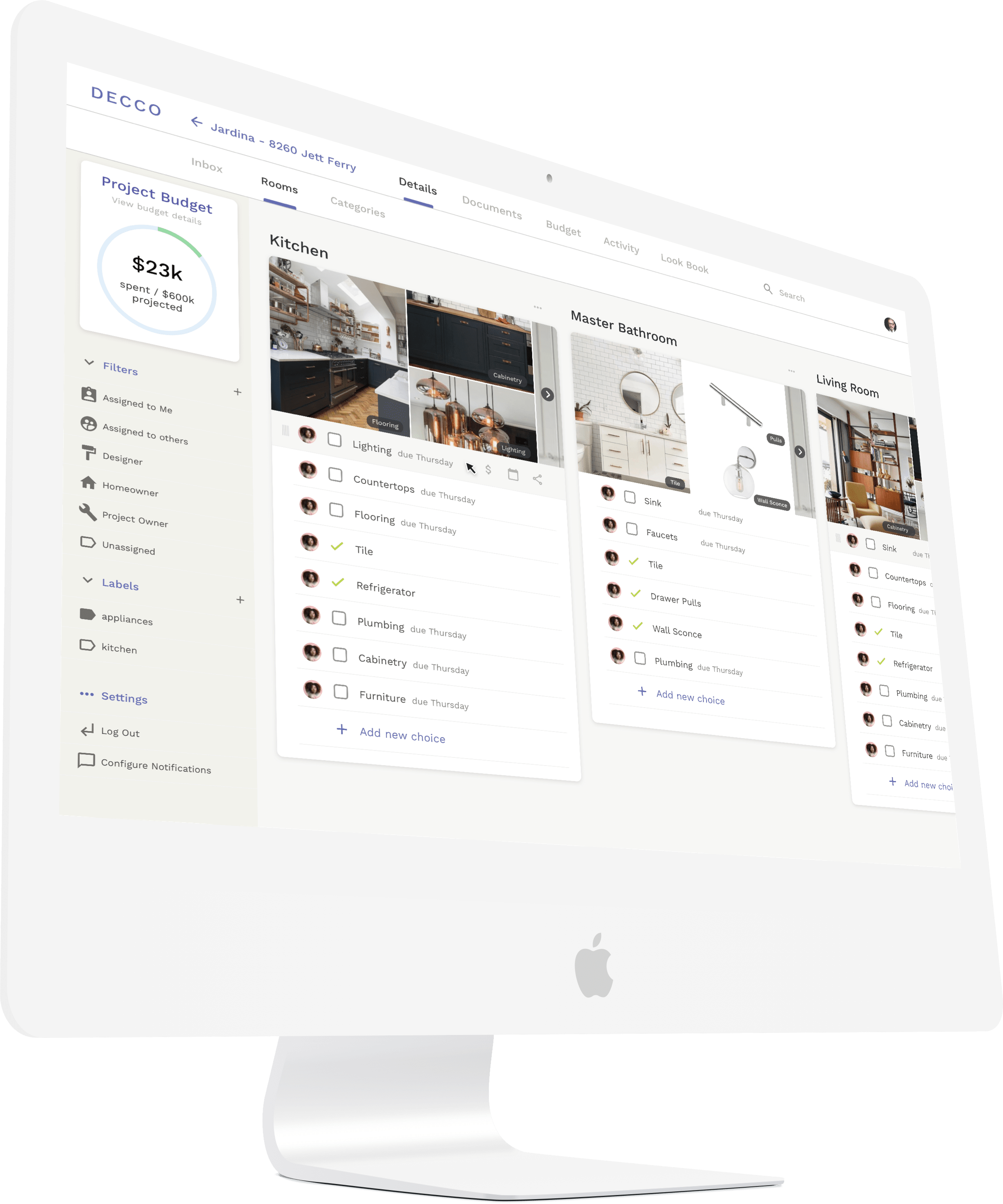
Research
After interviewing over a dozen builders, interior designers, and homeowners over the phone, and transcribing and coding their responses, we identified several pain points that we knew we could address in a limited time frame that would give the project a great shot at success. To validate these findings, we conducted further in-person User Story Mapping [link] exercises with each group to fully understand how the whole process of building a home (often at least a year long) unfolded from their perspective.
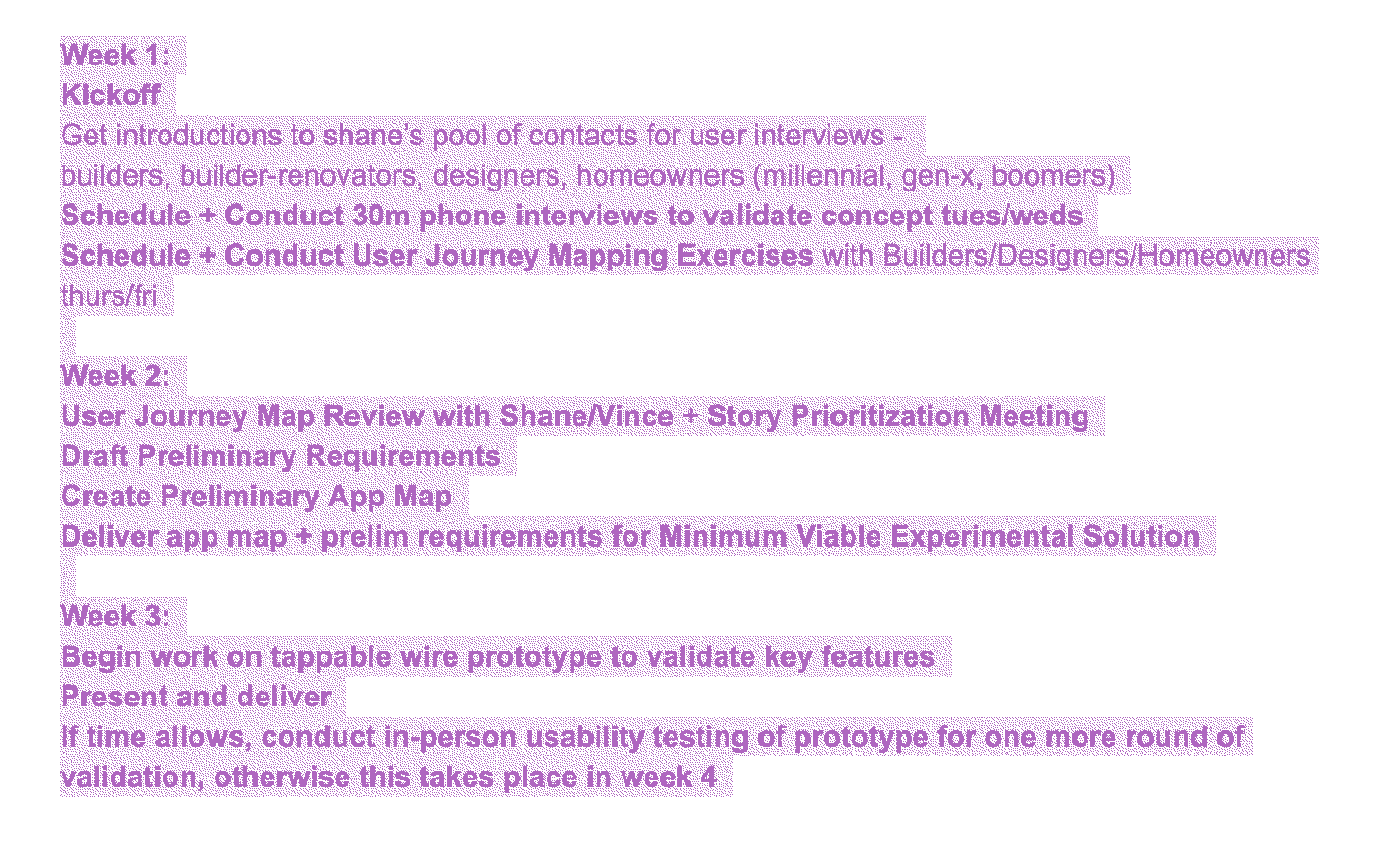
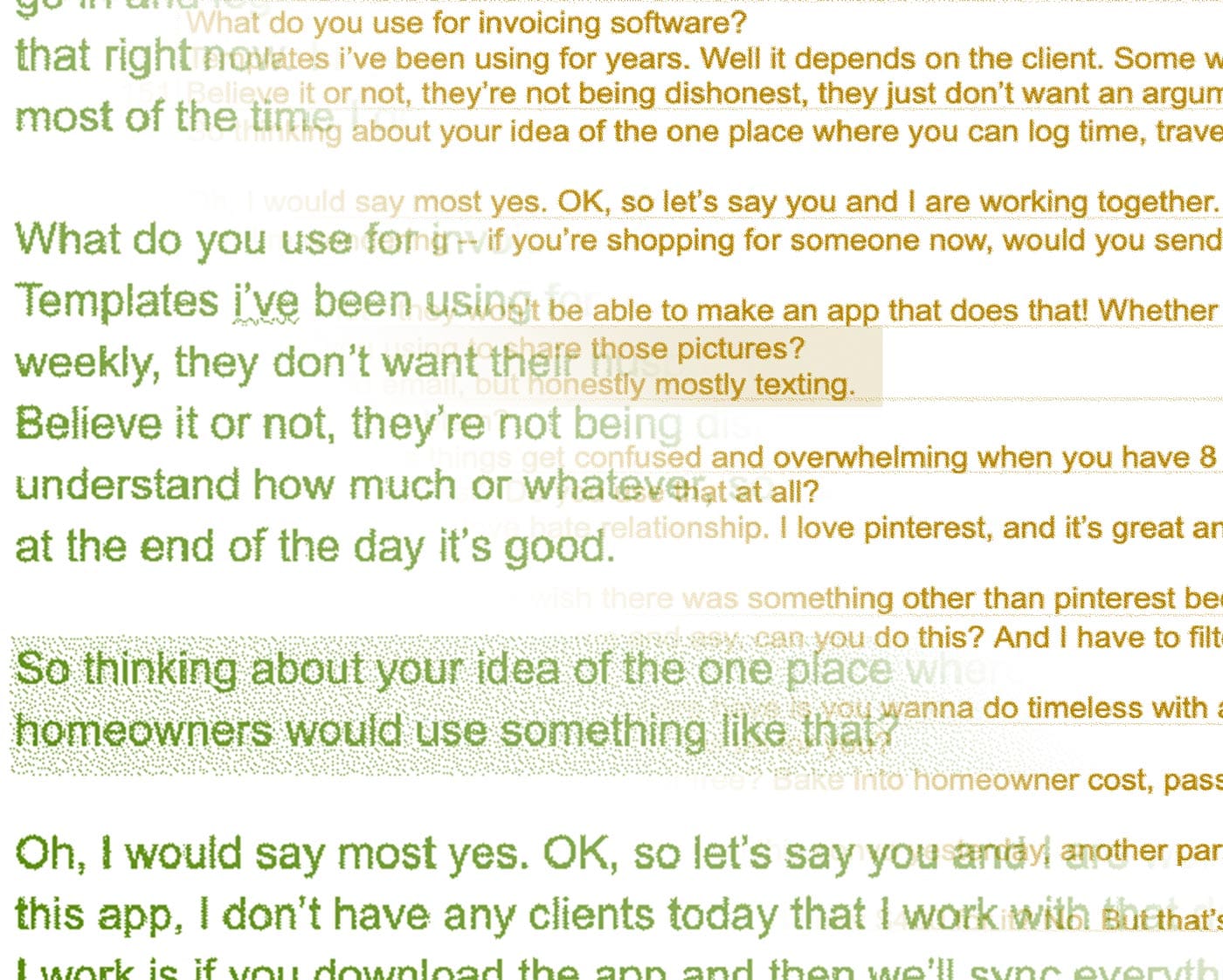
What we determined:
1. We needed to make sure that communication could happen in one place. So no matter your role in the project, you always knew where to go for up-to-date information on project decisions.
2. We needed to make sure that the system was easy enough to use that it would secure the attention of notoriously tech-averse builders who are reluctant to change their ways, even if they were frustrated by inefficiency..
3. We needed to devise a system that would allow for easy categorization of decisions so that the Roomworks team could analyze user trends and begin self-funding by partnering with advertisers to leverage its first-hand body of user data to assist in predicting shifts in the market.

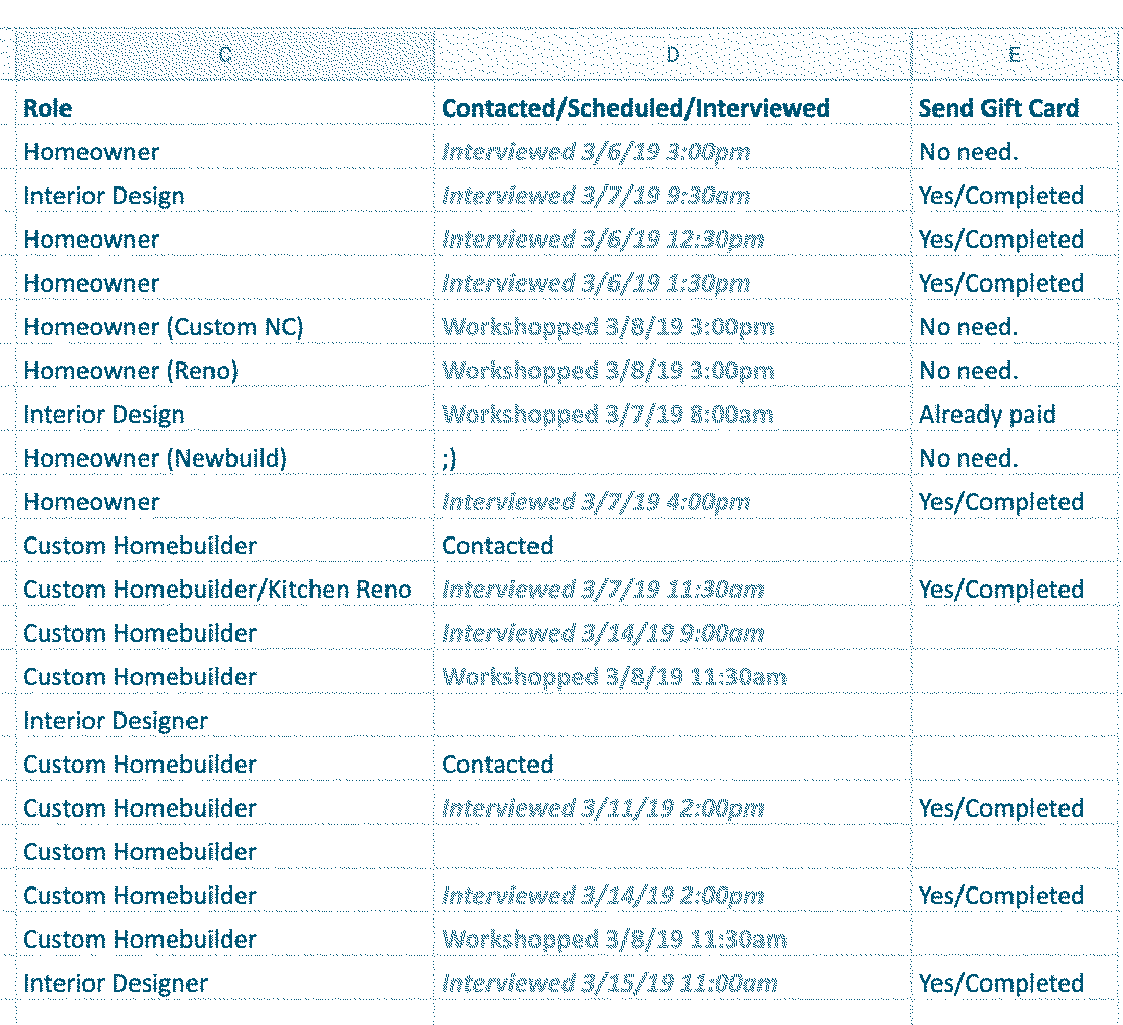
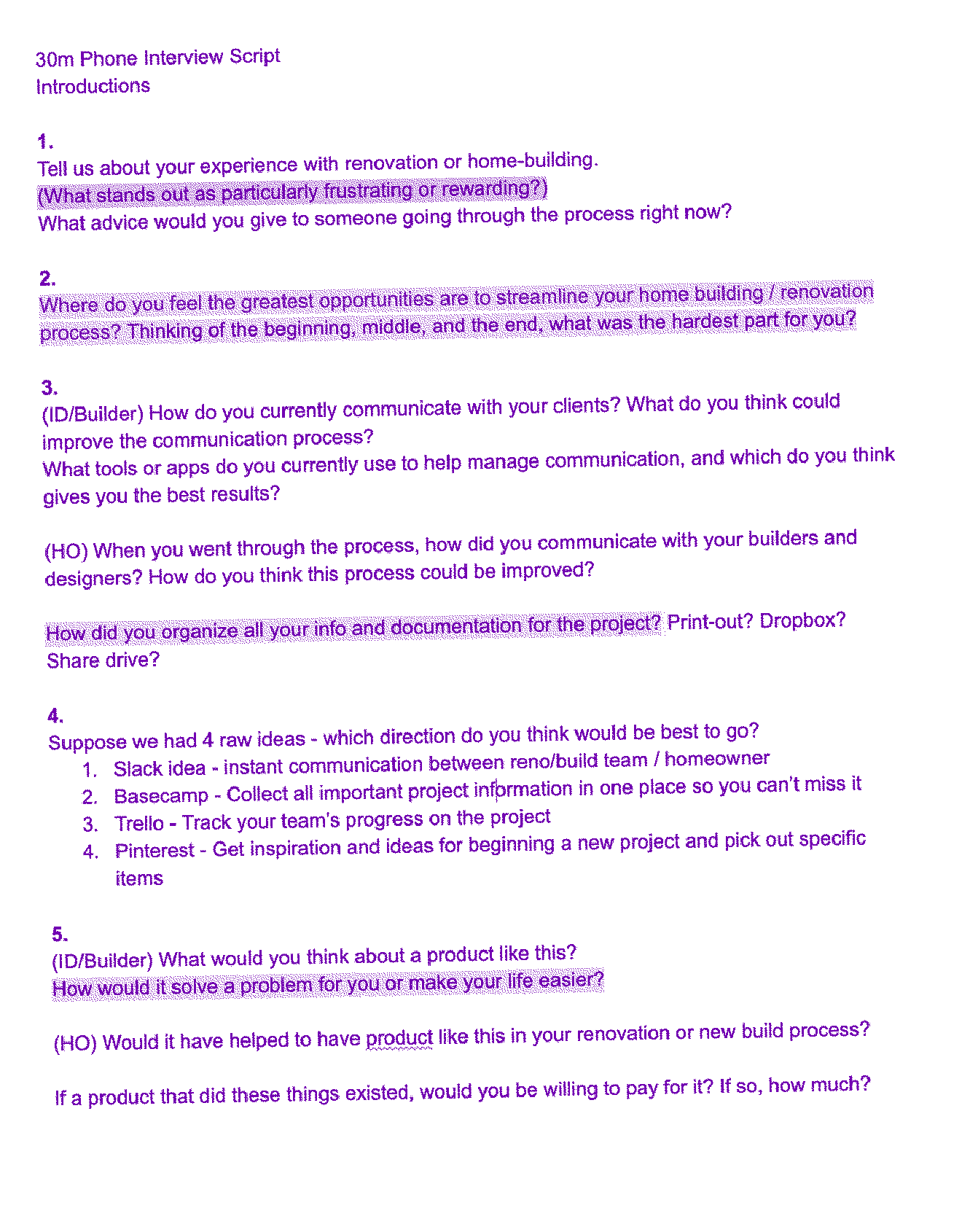
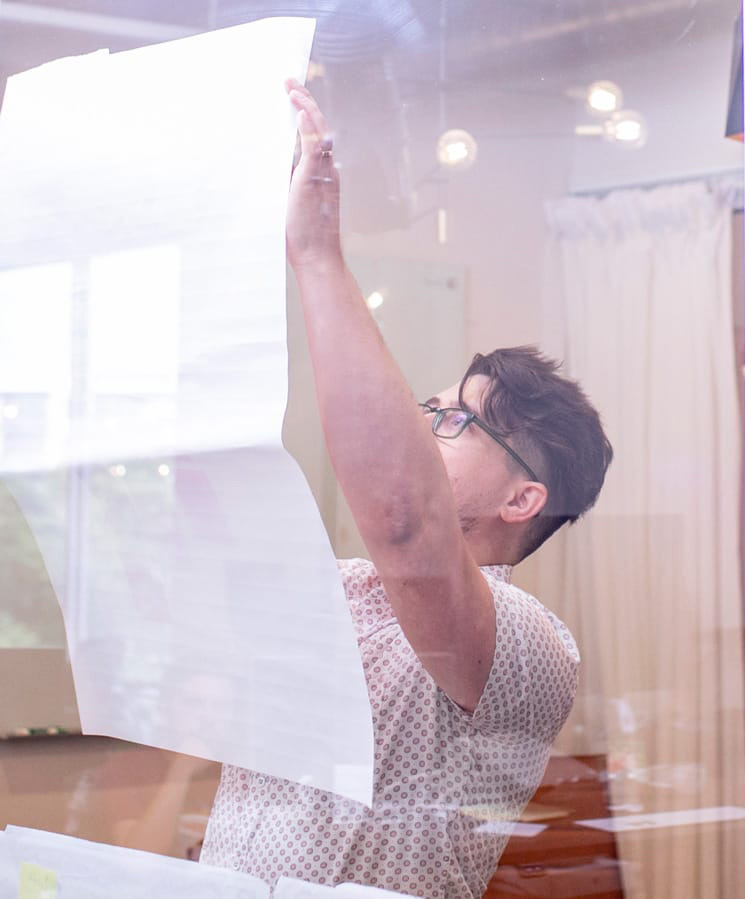

While I was putting together the key features for the project, our team was collaborating with a local branding agency, Watchword, to align on a new name and brand direction. Decco was born. I built and revised several prototype flows in Invision to demonstrate user onboarding, project creation, and maintenance - from the perspectives of all involved parties.
What would a project look like mid-stream? How would new decisions be created, options chosen? How could we make sure that we could even include sharing functionality so third-party contractors could access up-to-date data without inadvertently creating a paper trail that would quickly become outdated? How could we preserve all the decisions made on a project historically so all parties involved could go back and review the process and determine when, where, and why a particular decision was made? How about an archive of all signed documents for the homeowner to aid in their conversations with local permit offices?
I strove to deliver a design that would work equally well on mobile and desktop, knowing that our audience would be split between users on the go and those sitting at a desk all day. With prototypes in hand, and a roadmap defined for project development, we successfully delivered on our discovery phase to the client and look forward to watching Decco grow!
